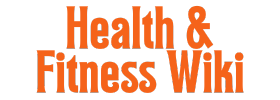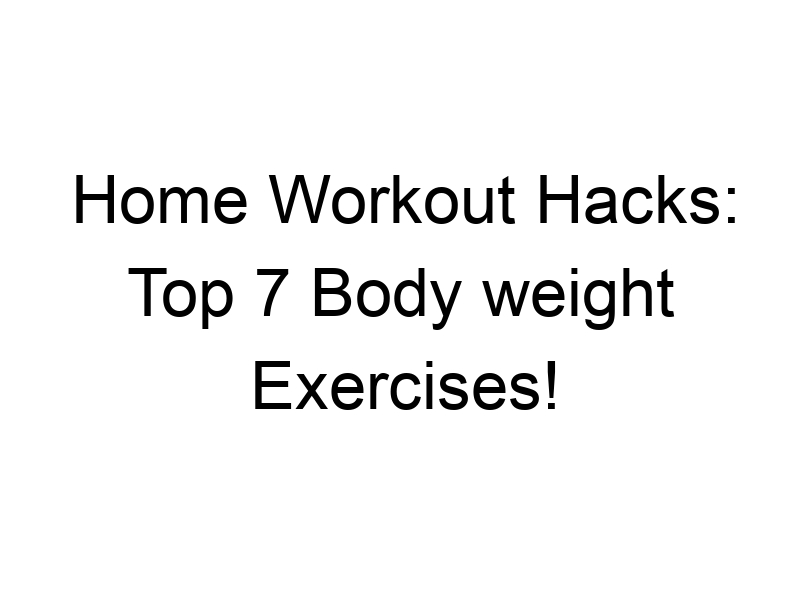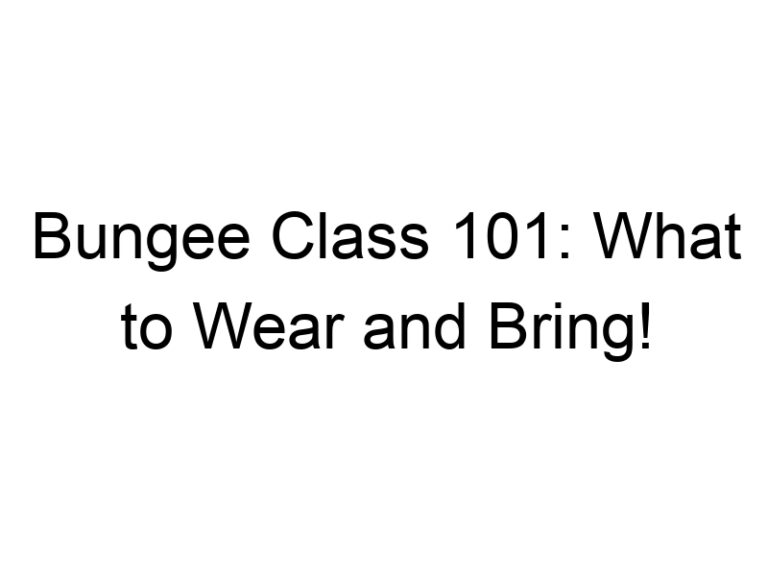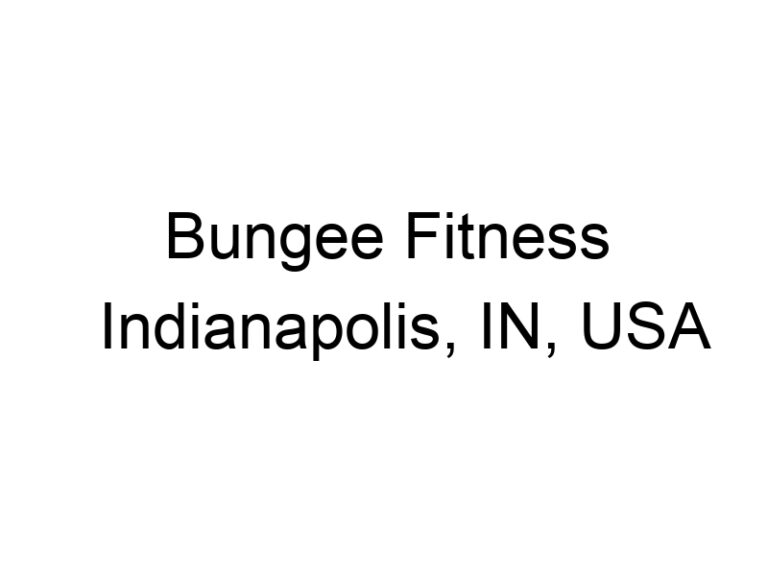Working out at home doesn’t have to be boring or complicated. With just your body weight, you can get a fantastic workout without any equipment. These exercises are perfect for anyone looking to build strength and tone muscles right in their living room. Plus, they’re super convenient for busy days when you can’t make it to the gym. Let’s dive into the top seven bodyweight exercises that will have you feeling fit and fabulous.
Key Takeaways
- Bodyweight exercises are versatile and can be done anywhere.
- No equipment is needed, making them accessible for everyone.
- They help improve strength, flexibility, and endurance.
- Perfect for quick workouts on busy days.
- Can be modified for different fitness levels.
1. Push-Ups

Push-ups are one of those classic exercises that seem simple but pack a punch. They’re like the Swiss army knife of workouts, targeting your chest, shoulders, triceps, and even your core. Mastering the push-up can really boost your upper body strength.
How to Do a Push-Up
- Start Position: Get into a plank position with your hands placed directly under your shoulders. Keep your feet hip-width apart.
- Body Alignment: Your body should form a straight line from your head to your heels. Engage your core to keep your hips from sagging.
- Execution: Lower your body by bending your elbows, keeping them close to your body. Go as low as you can without touching the ground.
- Return: Push through your palms to return to the starting position.
Common Mistakes
- Sagging Hips: Keep your body aligned; don’t let your hips droop.
- Flared Elbows: Your elbows should stay close to your sides, not flaring out.
- Neck Strain: Maintain a neutral neck position; don’t look up or down.
Tips for Beginners
- Knee Push-Ups: If regular push-ups are too challenging, start with your knees on the ground.
- Wide Stance: Increase the distance between your feet for more stability.
Push-ups not only build muscle but also improve your posture and can be done anywhere, no equipment needed. They’re a staple for a reason.
2. Squats
Squats are a powerhouse exercise that targets multiple muscle groups, including your quads, hamstrings, glutes, and core. They’re incredibly effective for building strength and can be done anywhere without any equipment. Squats are a must-have in any workout routine due to their versatility and effectiveness.
How to Perform a Basic Squat
- Stand with your feet shoulder-width apart. Your toes should be slightly pointed out.
- Keep your chest up and your back straight. Engage your core.
- Lower your body by bending your knees and pushing your hips back, as if sitting into a chair.
- Go as low as your flexibility allows, ideally until your thighs are parallel to the floor.
- Push through your heels to return to the starting position.
Tips for Perfecting Your Squat
- Ensure your knees are aligned with your toes to prevent injury.
- Keep your weight on your heels, not your toes.
- If you’re new to squats, start with a shallow depth and gradually increase as you gain flexibility.
Squats not only enhance your leg and core strength, but they also improve flexibility and boost calorie burning.
Variations to Try
- Goblet Squat: Hold a weight at your chest to add resistance.
- Jump Squats: Add a jump at the end of each squat for a cardio boost.
- Single-leg Squats: Challenge your balance and strength by squatting on one leg.
For more on how squats can enhance leg and core strength, check out our detailed guide.
3. Lunges

Lunges are a fantastic way to work on your lower body strength, balance, and flexibility. They’re a go-to exercise if you’re looking to spice up your routine without any equipment. The beauty of lunges is in their versatility. You can do them anywhere, anytime, and they come in many variations to keep things interesting.
How to Do a Basic Lunge
- Start by standing tall with your feet shoulder-width apart.
- Step forward with your right foot and lower your hips until both knees are bent at about a 90-degree angle. Make sure your right knee is directly above your ankle.
- Push back up to the starting position and repeat with the left leg.
Tips for Perfect Form
- Keep your torso upright and engage your core.
- Distribute your weight evenly between your front and back foot.
- Avoid letting your front knee go past your toes.
Variations to Try
- Reverse Lunges: Step backward instead of forward. This variation can be gentler on your knees.
- Walking Lunges: Instead of returning to the starting position, continue moving forward with each lunge.
- Side Lunges: Step out to the side, keeping your other leg straight. This targets your inner thighs.
Lunges are a dynamic, full-body exercise that enhance strength, balance, flexibility, and coordination. They might seem simple, but don’t underestimate them. With regular practice, lunges can significantly improve your lower body power and stability.
4. Planks

Planks are a staple in any fitness routine because they target your core like nothing else. Holding a plank might look easy, but maintaining proper form can be a real challenge. Here’s how you can get the most out of this simple yet effective exercise.
Why Planks?
Planks are more than just a core workout. They engage multiple muscle groups, including your shoulders, back, and glutes. This makes them perfect for building overall strength and stability. Plus, they can help improve your posture and reduce back pain.
How to Do a Plank
- Start by lying face down on the floor.
- Place your elbows directly under your shoulders and plant your hands firmly on the ground.
- Push up onto your toes, keeping your body in a straight line from head to heels.
- Tighten your core and squeeze your glutes to maintain stability.
- Hold this position for as long as you can without compromising form.
Tips for Perfecting Your Plank
- Keep your gaze slightly forward to avoid neck strain.
- Make sure your hips don’t sag or lift too high.
- Breathe steadily and deeply to maintain endurance.
“Consistency is key with planks. Even if you start with just 10 seconds, aim to increase your time gradually.”
Variations to Try
Once you’ve mastered the basic plank, try these variations to keep things interesting:
- Side Plank: Shift your weight onto one side, stacking your feet and lifting your opposite arm.
- Plank with Shoulder Taps: In your plank position, alternate tapping each shoulder with the opposite hand.
- Plank Jacks: Jump your feet out and in, similar to a jumping jack, while holding a plank.
Plank exercises offer numerous benefits, including strengthening the entire body, improving posture, and reducing low back pain. They also aid in enhancing core stability and flexibility, making them a valuable addition to any fitness routine.
5. Burpees
Burpees are like the Swiss Army knife of exercises. They work everything—arms, chest, quads, glutes, hamstrings, and abs. This full-body exercise is not for the faint-hearted. But if you want a quick and efficient workout, burpees are your go-to.
How to Do a Basic Burpee:
- Start in a standing position.
- Drop into a squat with your hands on the ground.
- Kick your feet back into a plank position.
- Lower your chest to do a push-up.
- Jump your feet back to the squat position.
- Explode into a jump from the squat, reaching your arms overhead.
Benefits of Burpees:
- Cardiovascular Boost: They get your heart rate up fast.
- Strength Building: Target multiple muscle groups at once.
- No Equipment Needed: Perfect for home workouts.
“Burpees are tough, but they build resilience. Every jump feels like a small victory.”
Tips for Better Burpees:
- Keep your core tight to protect your back.
- Land softly to reduce impact on your joints.
- Start slow and focus on form before speed.
Burpees might feel like punishment at first, but stick with them, and you’ll see improvement in both strength and endurance. They’re the kind of exercise you love to hate but can’t deny their effectiveness.
6. Mountain Climbers
Mountain climbers are a fantastic full-body exercise that really gets your heart pumping. This dynamic move mimics the action of climbing a mountain, but you can do it right in your living room. It’s a great way to boost cardiovascular endurance and strengthen your core. Plus, it doesn’t require any equipment, making it perfect for home workouts.
How to Do Mountain Climbers
- Start in a Plank Position: Keep your body straight and your hands directly under your shoulders.
- Drive Your Knees: Quickly bring one knee towards your chest, then switch and bring the other knee in. Keep alternating rapidly.
- Maintain Form: Make sure your hips stay level and don’t let them sag. Keep your core engaged throughout.
Benefits of Mountain Climbers
- Improves Cardio Fitness: They increase your heart rate quickly, which is great for cardio endurance.
- Strengthens Core and Legs: This exercise targets your abdominals, obliques, and leg muscles.
- Enhances Agility and Coordination: The rapid movement helps improve your coordination and agility.
Mountain climbers are effective full-body exercises that not only boost cardiovascular endurance but also enhance overall athletic performance. Proper technique is essential for maximizing results and minimizing injury risk.
Tips for Beginners
- Start Slow: If you’re new to this exercise, begin at a slower pace to ensure proper form.
- Focus on Form: It’s better to maintain correct posture than to rush through the reps.
- Set a Timer: Try doing mountain climbers for 30 seconds and gradually increase the time as you get stronger.
Mountain climbers are a staple in many workout routines for good reason. They’re efficient, effective, and can be modified to suit any fitness level. Whether you’re just starting out or looking to enhance your athletic performance, incorporating mountain climbers into your routine is a smart move. Give them a try and feel the burn!
7. Glute Bridges

Glute bridges are a fantastic exercise for targeting your lower body, especially the glutes and hamstrings. They are simple yet effective and can be done anywhere without any equipment.
How to Perform Glute Bridges
- Start by lying on your back with your knees bent and feet flat on the floor, hip-width apart.
- Place your arms at your sides with palms facing down.
- Engage your core and squeeze your glutes as you lift your hips off the ground until your body forms a straight line from your shoulders to your knees.
- Hold this position for a moment before slowly lowering your hips back to the starting position.
Tips for Effective Glute Bridges
- Ensure your feet are not too close or too far from your hips to maintain a comfortable and effective position.
- Avoid arching your back; keep your core tight throughout the movement.
- Focus on squeezing your glutes at the top of the movement for maximum effect.
Regularly doing glute bridges can significantly improve your core stability and strengthen your glutes, which are crucial for better performance in various physical activities.
Variations to Try
- Single-Leg Glute Bridge: Perform the bridge with one leg extended straight, keeping the other foot flat on the floor.
- Elevated Glute Bridge: Place your feet on an elevated surface like a step or bench to increase the range of motion.
- Weighted Glute Bridge: Add a weight across your hips for extra resistance.
Incorporating glute bridges into your routine can lead to enhanced core stability and strength, making them a valuable exercise for improving overall fitness.
Conclusion
So, there you have it! Seven bodyweight exercises that can totally transform your home workout routine. These moves are simple, effective, and don’t require any fancy equipment, which means you can do them anytime, anywhere. Whether you’re looking to build strength, improve flexibility, or just break a sweat, these exercises have got you covered. Remember, consistency is key. Stick with it, and you’ll start seeing results before you know it. So, roll out that mat, clear some space, and get moving. Your body will thank you!
Frequently Asked Questions
What are the benefits of body weight exercises?
Body weight exercises help improve strength, flexibility, and balance without needing any equipment. They are great for building muscle and burning calories.
How often should I do body weight exercises?
It’s recommended to do body weight exercises 3-4 times a week, giving your muscles time to rest in between sessions.
Can beginners do these exercises?
Yes, beginners can start with modified versions of these exercises and gradually increase intensity as they get stronger.
Do I need any equipment for body weight exercises?
No equipment is needed for body weight exercises, making them perfect for home workouts.
How long should a body weight workout be?
A typical body weight workout can be anywhere from 20 to 45 minutes, depending on your fitness level and goals.
Can body weight exercises help with weight loss?
Yes, they can help burn calories and build muscle, which can aid in weight loss when combined with a healthy diet.
Are body weight exercises safe for everyone?
Most people can safely perform body weight exercises, but it’s always a good idea to check with a doctor if you have any health concerns.
How can I make body weight exercises more challenging?
You can increase the difficulty by adding more repetitions, changing the tempo, or incorporating advanced variations of the exercises.







